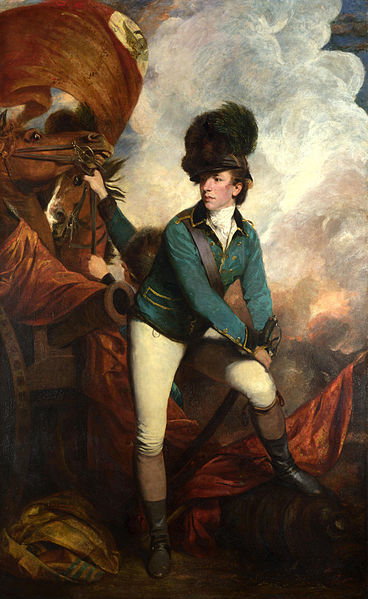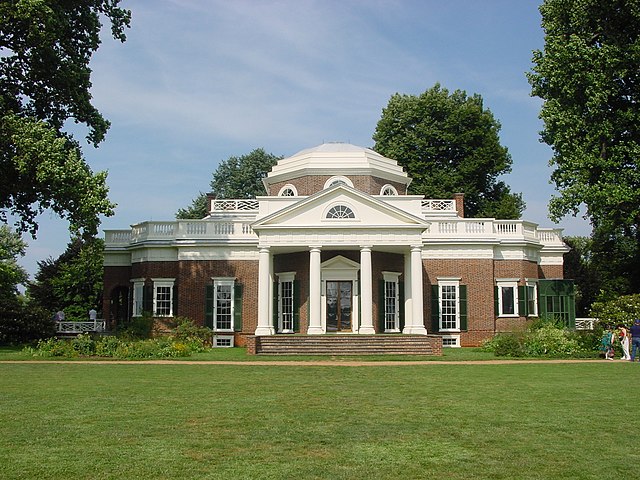John Jouett Jr. was an American farmer and politician in Virginia and Kentucky best known for his 40-mile (64 km) ride during the American Revolution. Sometimes called the "Paul Revere of the South", Jouett rode to warn Thomas Jefferson, then the outgoing governor of Virginia that British cavalry had been sent to capture them. After the war, Jouett moved across the Appalachian Mountains to what was then called Kentucky County. He thrice served in the Virginia House of Delegates, first representing Lincoln County and later Mercer County before Kentucky's statehood. Jouett also represented Mercer County at the Danville Separation Convention in 1788. He later served three terms in the Kentucky House of Representatives, first representing Mercer County, then adjoining Woodford County.
The only known depiction of Jack Jouett made while he was living, a silhouette by his son, Matthew
"Lieutenant-Colonel Banastre Tarleton" by Sir Joshua Reynolds
Thomas Jefferson's Monticello
Tarleton's Cavalry in a later fight (1814 engraving)
Paul Revere was an American silversmith, military officer and industrialist who played a major role during the opening months of the American Revolutionary War in Massachusetts, engaging in a midnight ride in 1775 to alert nearby minutemen of the approach of British troops prior to the battles of Lexington and Concord.
John Singleton Copley, Portrait of Paul Revere. c. 1768–1770, Museum of Fine Arts, Boston
Revere's dentistry tools
The Bloody Massacre Perpetrated in King Street Boston on March 5, 1770, a copper engraving by Paul Revere modeled on a drawing by Henry Pelham, 1770.
20th-century depiction of Revere's ride








